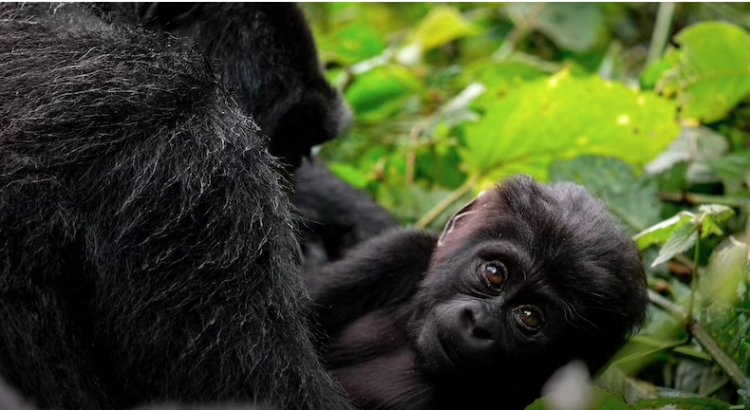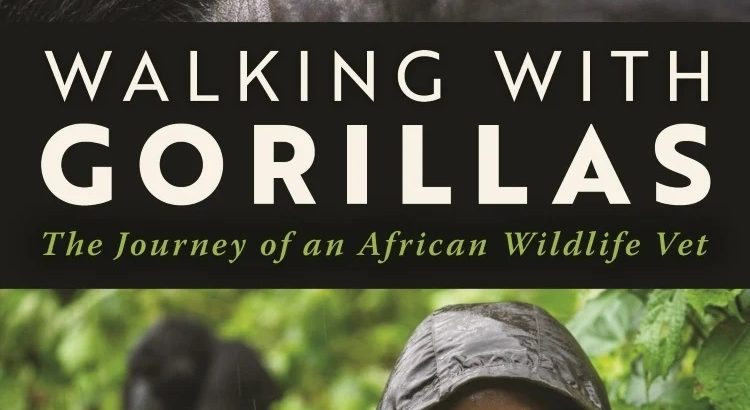Guest: Author and Uganda’s first Wildlife veterinarian Dr. Gladys Kalema-Zikusoka joins John to discuss her book ‘Walking with Gorillas’.
published : 7 August 2023
Source : Cape Talk

Guest: Author and Uganda’s first Wildlife veterinarian Dr. Gladys Kalema-Zikusoka joins John to discuss her book ‘Walking with Gorillas’.
published : 7 August 2023
Source : Cape Talk

Durban – Primates and presidents have shaped the unique and dangerous life of Uganda’s first wildlife vet, Dr Gladys Kalema-Zikusoka, who was in South Africa this week to promote her memoir, “Walking With Gorillas: The Journey of an African Wildlife Vet”.
In an interview with the Independent on Saturday, she said it was vital to build African leadership and to cultivate a love for conservation in people who live where the wildlife is found.
“The first gorilla I met, I studied his eyes and I felt a really deep connection. They are so accommodating when you are with them it’s very therapeutic,” she said.
The book details her life of courage; shaped by politics from birth, her commitment to growing and protecting the mountain gorilla population in Uganda, and her near death as a result of Covid-19.
In the foreword, Dr. Jane Goodall writes that she first met Dr. Gladys when she attended one of her lectures in London in 1993, “It was immediately apparent that there was something special about this vibrant Ugandan woman ‒ a sense of purpose and love for her work were strikingly apparent”.
Their paths crossed from time to time and she took an increasing interest in Dr. Gladys’ career.
“In some ways, her trajectory was not unlike my own, but hers was a more difficult path,” wrote Goodall.
“I was a bit of a surprise for my parents and siblings, but I was loved,” she writes.
Her maternal grandfather, Martin Luther Nsibirwa, was the prime minister of the Kingdom of Buganda ‒ a subnational kingdom within Uganda, a British protectorate at the time. He was assassinated when her mom, Rhoda Kalema, was only 16 because he acquired land from influential chiefs to expand Makerere College into a University. Unbeknown to his killers, parliament had passed the land acquisition bill a day before he was killed.
In 1971 Obote was overthrown in a coup by Idi Amin while her dad was with him at a Commonwealth Heads of Government meeting in Singapore. While Obote went into exile in Tanzania, Dr. Gladys’ dad returned to be with his family. She writes that soon after Amin began “his reign of terror” he turned his attention to her family and in January 1972, at the age of 45, her father was assassinated. His body was never found.
“It seemed as if history was repeating itself with a father leaving behind a young family,” she writes. At the time Dr Gladys was 2 years old and her mom, once again affected by a political assassination, quit politics to take care of her six children.
In her book, she describes it as “terrifying times for us all, as Amin’s reputation as ‘the Butcher of Uganda’ grew”. She says his children attended the same school she did, and the headmaster warned the pupils not to get into conflict with them.
The only way she coped with this terror was through her love for animals. Her first pet was a stray pygmy cat called Pili, and she regularly recruited children to participate in pet funerals, even though she grew up in a culture that believed animals did not have souls. She writes: “Something deep inside me knew that they had as much soul as any human, and I mourned them in the same way.”
A defining moment came when the Cuban ambassador to Uganda and his wife moved into the house opposite hers. Their pet vervet monkey, Poncho, was fascinating because his fingers and nails looked exactly like hers. One day while she was practising the piano Poncho watched intently. Knowing how playful and intelligent he was, she left the room to see if he would imitate her.
“Sure enough, Poncho climbed onto the stool and played one note with one finger. He was my first venture into studying primates,” she wrote.
By the age of 12, she had already decided to become a vet because she hated to see animals suffer and she was determined to dedicate her life to making them better.
“Most people in Uganda don’t consider veterinary medicine a worthwhile career because people don’t place much value on pets in a developing country with so much human suffering. In spite of this, I was fortunate enough to have a mother who understood my passion and encouraged me to follow my dreams,” she writes.
She said the 1970s were devastating for Uganda’s wildlife, particularly elephants and rhinos which were hunted for ivory and horn.
“Conservation was of little concern to Idi Amin who himself started killing animals in the national parks where hunting was not permitted and encouraged people to enrich themselves from the Ivory trade.”
In 1991 she went to London to study at the Royal Veterinary College. A talk on the mountain gorillas of Rwanda by Dr. Barkley Hastings, the first vet to work with mountain gorillas, and Dr. Ian Redmond, the first research assistant of the late Dr. Dian Fossey, fuelled her desire to work with these shy, gentle giants.
In January 1996 she started her first job at Uganda National Park. Even though it was her dream job, there weren’t any funds to support it and she spent a lot of time explaining to others who worked for the park why she was hired, and how vets could support conservation efforts. She also had to explain why it was necessary to intervene when the wildlife was affected by an issue that was human-related, or life-threatening in a species that was critically endangered like the mountain gorillas who only numbered 650 at the time.
“At the time that I was recruited, conservationists believed that wild animals should not be interfered with and natural selection should always take its course.”
From dealing with threats posed by The Lord’s Resistance Army and its leader Joseph Kony to poachers and a scabies outbreak in the wild, her career has been fraught with danger.
The book is peppered with nuggets of humor and kindness, from how her mom climbed the mountains to meet the gorillas in a skirt, and how she was approached for help by the wife of Ugandan President Yoweri Museveni when two elephants ate the bananas in her cousin’s plantation.
A recurring theme has been that “much like humans, chimpanzees (and other primates) that are treated well as infants are more confident and rise faster in the ranks to become alpha males”.
Her One Health approach to ensuring the survival of gorillas in the Bwindi Impenetrable National Park is what she is most recognized for. Dr. Gladys realized that people who live near the gorillas must be healthy because their diseases would inevitably affect the animals. She also realized they would not kill the gorillas for bush meat if they had other sources of income and could provide for their families. Through a multidisciplinary approach, she has made them custodians of gorilla welfare.
Through gorilla tourism, people earn an income and ensure that the animals are safe, even tolerating them when they raid their crops.
Dr Gladys and her husband, Lawrence Zikusoka, have also helped the coffee farmers find international buyers, securing their income.
She taught communities about hygiene after a scabies outbreak infected the animals and it was during the Covid-19 outbreak that she pioneered health workshops with rangers to ensure the gorillas and people were protected. Through her NGO, Conservation Through Public Health, Dr. Gladys has shown the world that the lives of people and gorillas are intertwined and that one cannot be successful without the other.
“Walking With Gorillas: The Journey of an African Wildlife Vet”, will make you laugh, make you cry, but most of all it will leave you with a deep respect for a woman who triumphed over the odds to become one of Africa’s most respected leaders.
Source: IOL
Published Aug 12, 2023

Source: News24
Published 12 Aug
Credit : Karabo Kgoleng

Growing up under the reign of military dictator Idi Amin, Dr Gladys Kalema-Zikusoka had to create the position of wildlife veterinarian for herself.
One of her greatest achievements has been finding the connection between the health of the villages on the edge of the Bwindi Impenetrable National Park, and the critically endangered mountain gorillas inside.
Guest: Dr Gladys Kalema-Zikusoka, Ugandan veterinarian and founder of Conservation Through Public Health.
Relevant links:
Walking with Gorillas: The Journey of an African Wildlife Vet
Broadcast
Source: ABC.net